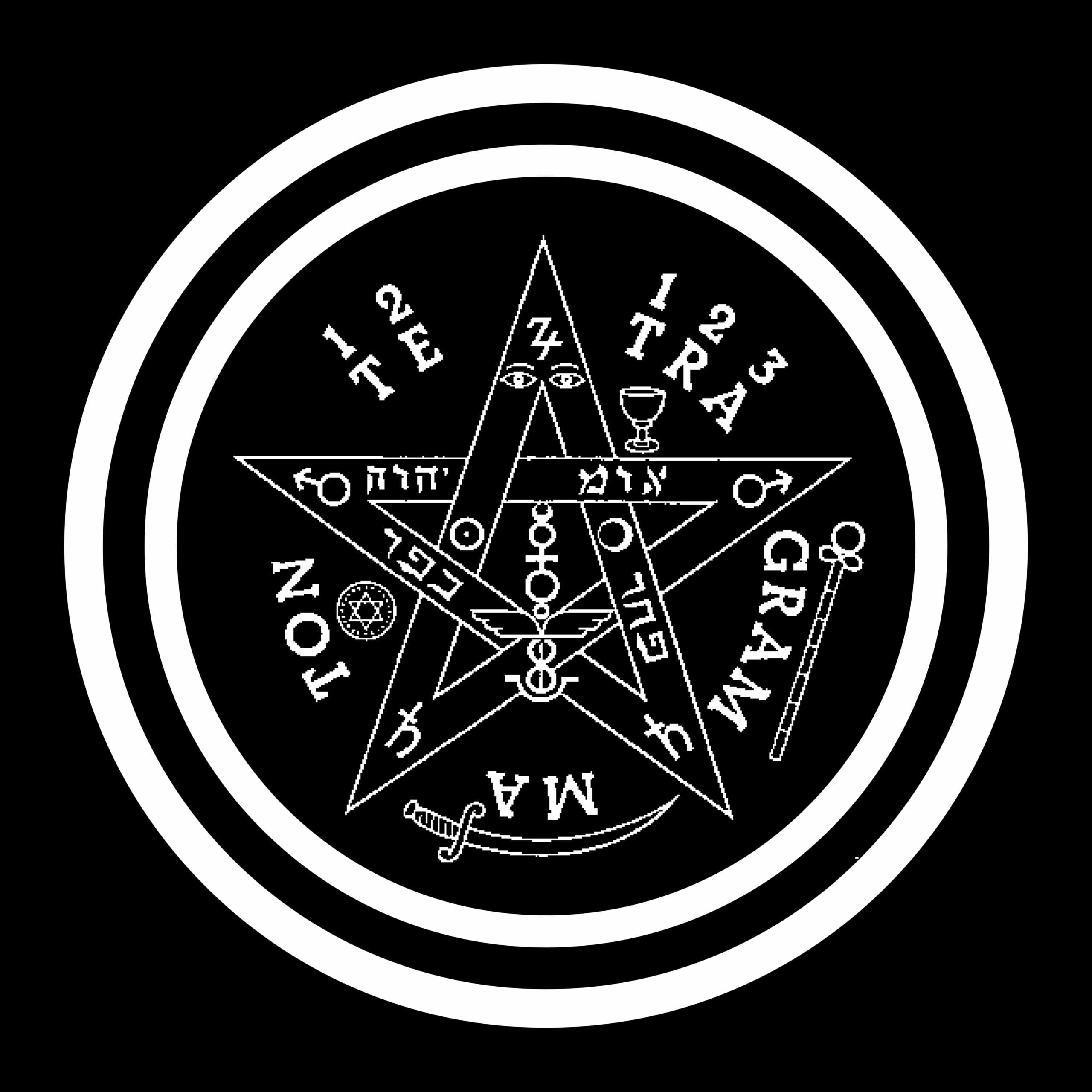Embark on an enlightening journey into the enigmatic world of the Tetragrammaton, a symbol steeped in ancient mystery and revered as the sacred name of God. Composed of four Hebrew letters (YHWH), the Tetragrammaton has captivated and intrigued humanity for centuries. Join us as we delve into its origins, decipher its meaning, and explore its enduring relevance in the article “Unlocking the Power and Mystery of the Tetragrammaton Symbol.”
Unveiling the Divine Name: The Tetragrammaton
At the heart of the Tetragrammaton’s mystique lies its profound significance—it represents the very name of God in Hebrew. Far from a mere symbol, the four letters—Yod, He, Vav, He—combine to form YHWH, a name imbued with profound spiritual weight. Often translated as “I Am,” this simple yet powerful phrase hints at God’s eternal and unchanging nature, existing beyond the confines of time and space.
For centuries, scholars and theologians have grappled with the Tetragrammaton’s full meaning. Some interpret it as a derivative of the Hebrew word for “to be,” suggesting that YHWH represents the source of all creation and existence. Others believe it embodies God’s covenant with humanity—an unbreakable promise of protection and guidance.
The Unspoken Name: A Testament to Reverence
The profound reverence attributed to the Tetragrammaton is evident in the Jewish tradition, where uttering it aloud is strictly forbidden. The name is considered so sacred that even its pronunciation remains shrouded in mystery. Instead of speaking YHWH directly, alternative names like “Adonai” (Lord) or “Elohim” (God) are used in prayers and rituals, demonstrating the utmost respect for the divine.
Yet, the Tetragrammaton’s influence extends far beyond its unspoken form. Mystical traditions like Kabbalah ascribe even deeper meaning to the symbol. Each letter is believed to possess unique attributes, and their combination unlocks hidden messages within the Torah, much like a divine code awaiting interpretation.
From Ancient Origins to Modern Relevance
The Tetragrammaton’s journey through history began with its appearance in ancient Hebrew texts, such as the Dead Sea Scrolls. Originally a spoken word, it later transitioned into written form. Over time, the decision to cease its pronunciation altogether cemented its status as a symbol of immense sacredness.
Throughout history, the Tetragrammaton has been interpreted and transcribed in diverse ways, traversing linguistic and religious boundaries. While pronunciations like Yahweh or Jehovah have gained popularity, the true vocalization of YHWH remains a subject of ongoing debate among scholars.
The Tetragrammaton’s presence is deeply woven into the fabric of Judaism, where it endures as a sacred symbol, studied and revered for its spiritual depth. However, its significance extends beyond Jewish tradition, sparking theological discussions within various branches of Christianity.
Beyond Religion: Cultural Influence and Interpretation
The Tetragrammaton’s reach extends beyond religious contexts, permeating art, mysticism, and popular culture. It adorns amulets and talismans, graces religious icons, and appears in various forms of artistic expression. Its presence in movies, books, and music continues to fuel diverse interpretations and discussions, showcasing its enduring power to captivate the human imagination.
Delving Deeper: Exploring the Symbol’s Nuances
The Tetragrammaton’s allure lies in its inexhaustible layers of meaning. Here are additional insights to consider:
- Vibrational Power: Some believe that chanting or meditating on YHWH can unlock a profound spiritual connection, attributing a unique vibrational frequency to the name.
- The Divine Feminine: Intriguingly, some interpretations link the Tetragrammaton to the concept of the divine feminine, hinting at the presence of feminine energy within the divine and prompting reflection on the balance of masculine and feminine forces in the universe.
- Respect and Reverence: The Tetragrammaton’s power demands respect and mindful consideration, urging us to approach it with reverence and avoid its misuse or misappropriation.
The Tetragrammaton, much more than a collection of letters, continues to fascinate and inspire, its true meaning and power remaining a source of endless exploration and wonder. As you encounter this symbol, take a moment to appreciate its rich history and the profound mysteries it holds, recognizing its enduring legacy as a testament to humanity’s enduring quest to connect with the divine.
The Tetragrammaton in the Bible: A Covenant Name
The Hebrew Bible, a tapestry of sacred narratives and teachings, is where we encounter the Tetragrammaton in its most profound context. This four-letter name, YHWH, stands apart from other appellations for God; it represents his personal and covenantal name, revealing a God intimately involved with his creation.
The earliest known scriptural appearance of the Tetragrammaton occurs in the book of Exodus, during God’s revelation to Moses. Remember the powerful declaration, “I AM WHO I AM” (Exodus 3:14)? This statement encapsulates the essence of the Tetragrammaton: a God eternally existing, self-sufficient, and the ultimate source of being.
Over time, the precise pronunciation of the Tetragrammaton became a matter of debate and, eventually, a practice shrouded in reverence. While scholars suggest that “Yahweh” or “Yahveh” are likely approximations, Jewish tradition, out of immense respect for the name’s sanctity, opted to substitute it with “Adonai” (Lord) during scriptural readings. This practice underscores the profound awe and reverence accorded to God’s personal name.
The Tetragrammaton, woven throughout the Hebrew Scriptures, serves as a constant reminder of the unique bond between God and his people. Those four letters encapsulate a promise—a testament to God’s unwavering faithfulness and presence. Reflecting upon the Tetragrammaton allows us to grasp the depth of God’s personal nature and his unwavering care for all he has created.
Unraveling the True Meaning of the Tetragrammaton
More than a word, the Tetragrammaton, represented by the Hebrew letters יהוה (YHWH), stands as an enduring enigma that has captivated theologians, mystics, and scholars for centuries. It embodies a name so sacred, so potent, that it is approached with the utmost respect and reverence.
Why does this four-letter word hold such immense weight? It is believed to be the personal name of the God of Israel, first revealed in the book of Exodus when God spoke to Moses—an encounter brimming with divine power and significance.
The most widely accepted interpretation of the Tetragrammaton is “I AM WHO I AM,” a phrase uttered by God himself. This declaration speaks of a deity who transcends our linear understanding of time and space—a God who always was, is, and will be. It hints at a being entirely self-sufficient, not contingent upon anything or anyone else for existence.
However, comprehending the Tetragrammaton goes beyond deciphering a straightforward definition. Jewish tradition maintains that this name is too holy to be spoken aloud. It’s akin to a whispered prayer, a gesture of profound reverence for a concept that surpasses human comprehension. By using “Adonai,” meaning “Lord,” in prayers and rituals, the sacredness of the name is preserved.
The Tetragrammaton is much more than a static label; it pulsates with layered meanings. Some perceive the four letters as symbolizing the foundational elements of creation: fire, water, air, and earth. Others see it as a constant reminder of God’s omnipresence, his watchful gaze extending over all things.
Imagine stepping back in time: the Tetragrammaton was an integral part of daily life in ancient times. It graced coins and seals, even worn as protective amulets—a testament to its central role in ancient Israelite faith and culture. It’s even been connected to ancient magical practices, underscoring its association with divine power and protection.
Even today, the Tetragrammaton remains a subject of intense study and debate. Scholars continue to unearth its origins and delve into its myriad interpretations. Its appearances in religious texts and popular culture speak to its enduring power to fascinate. Although its precise meaning may remain partially veiled, the Tetragrammaton continues to evoke a sense of awe and wonder toward the divine.
Deciphering the Tetragrammaton Star: Symbol of the Divine
Having explored the Tetragrammaton, let us now turn our attention to its visual representation—the five-pointed star. Far from a mere geometric shape, the Tetragrammaton star is deeply entwined with religious and spiritual beliefs, adding another layer of meaning to the already profound Tetragrammaton.
Consider this: the Tetragrammaton, those four Hebrew letters (YHWH), embodies the unpronounceable, ineffable name of God. This name, often vocalized as “Yahweh” or “Jehovah,” points to something eternal and immutable about God’s essence. Encasing this powerful name within a star gives rise to the Tetragrammaton star—a symbol of completeness, unity, and everlasting existence. It serves as a visual reminder of God’s protective embrace surrounding us.
However, the Tetragrammaton star, like the name it represents, defies a singular interpretation. Throughout history, different groups have understood its meaning in unique ways. In Judaism, for example, it represents a visual expression of God’s name, a name so holy that its pronunciation is reserved for specific sacred contexts. In Kabbalah, a mystical tradition within Judaism, the star transforms into a roadmap for spiritual seekers, guiding them on their journey and unlocking the secrets of creation. Venturing into the realm of occult traditions, we find the Tetragrammaton star often associated with the harnessing of spiritual power, seeking protection, and forging a connection with the divine.
The beauty of the Tetragrammaton star lies in its ability to hold such diverse layers of meaning. It reflects the richness and complexity of human belief systems, inviting us to explore these different perspectives and appreciate the enduring power of symbols in shaping our understanding of the sacred and the divine. Remember, like the Tetragrammaton itself, the star encourages us to approach with respect, seeking knowledge and understanding rather than drawing hasty conclusions.
Internal Links:
Have you heard about the solstice east lawsuit? If you haven’t, click the link to read all about it! We’ve also written an article about table salt in chemistry, which you can read by clicking the link.
















